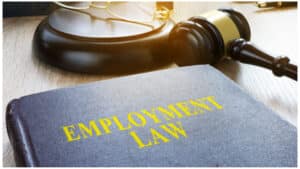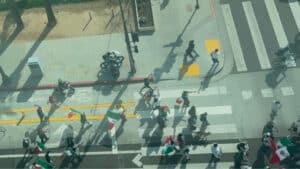
This week’s question comes from Harry B. in Walnut Creek who asks: “How is it that the President can issue an Executive Order regarding immigration and some court can just swoop in and say he can’t. He is the President now and people have just got to get used to it. Why does the Judge, one person, get to stop what we voted for when we elected Trump: immigration reform and protection from terrorists?”
Harry, my politics aside, you raise some important questions. President Trump is used to running his business with a tight, decisive, fist. But this is not The Apprentice where he can just fire the other two branches of government.
As taught in elementary school we have a three-part government designed to place checks and balances on the power of any branch. Our forefathers rebelled against a monarch and did not want to create another absolute ruler. The legislature passes laws after votes on bills in the House and Senate by Congresspersons and Senators, respectively.
A bill is then presented to the President who can sign the bill into law or veto (say no to) the bill. By a supra majority (2/3rd) vote, Congress can override a veto. If the law is believed to violate the Constitution, it can be challenged in the federal courts by the filing of a lawsuit seeking most likely an injunction (a court order saying that the law can’t be implemented).
Federal court judges are appointed by the President with the advice and consent of the Senate. The judges are appointed for life to protect the law from the whims of political influence and possibility that opinions might be based on popularity, to gain votes, rather than law. State court judges are elected County by County while the Court of Appeals judges come from a wider area.
Federal judges, likewise, serve districts which are larger than a single county. The United States District Court for the Western District of Washington, where the case was originally filed, is a federal court serving the area west of the Cascade Mountains from Oregon to the Canadian border. The district has courthouses in Seattle and Tacoma.
The appellate court that reviews the decisions of the Western District of Washington is the United States Court of Appeal for the Ninth Circuit which oversees the federal district courts in the states of Arizona, California, Oregon, Washington, Idaho, Montana, Alaska, and Hawaii, as well as the Territories of Guam and the Northern Mariana Islands.
The Ninth Circuit has a wide reach, yet another way of making sure that it is not biased towards one state. Its decisions can, as here, affect the entire country. The largest of U.S. Courts of Appeal in jurisdiction, the Ninth Circuit has its headquarters in San Francisco at 7th and Mission Streets. It is one of the most beautiful buildings in the country and you should take a tour.
The case was against President Trump, the U.S. Department of Homeland Security, and the Secretary of State concerning President Trump’s Executive Order entitled “Protecting the Nation from Foreign Terrorist entry into the United States, Order No. 13796.” The Attorney General from the State of Washington, who would be effected by this ban (many of those effected here were refuges with approval from the State Department to enter, legally, as well as skilled technical workers employed at Microsoft) was the lead plaintiff.
The Washington Attorney General sought a temporary restraining order (TRO) to stop enforcement of the ban. A TRO is an extraordinary remedy that requires a plaintiff to show a likelihood of success on a later filed motion for a permanent injunction, the likelihood that harm will be suffered if relief is not granted immediately, and the TRO is in the public interest.
The U.S. government claimed it violated the separations of powers under the Constitution for the judiciary to even entertain a constitutional challenge to the Executive Order. U.S. District Court Judge James Robart, appointed by Republican President George W. Bush in 2004, heard the case and held that the court was compelled to intervene to fulfill its role in the constitutional tripartite (Legislative, Judicial and Executive) system of government. The ruling enjoined parts of Executive Order prohibiting foreigners from seven mostly Muslim countries: Iran, Iraq, Syria, Sudan, Libya, Yemen and Somalia, from having their visas suspended for 90 days, a 120-day suspension of the US Refugee Admissions Program and a complete, indefinite ban from those who were Syrian. The Order gave religious minorities, facing persecution priority, to obtain one of the permitted 50,000 refugee visas.
The Ninth Circuit, in ruling against President Trump, held that judiciary possesses the authority under the Constitution to review decisions by the President in the areas of immigration and national security. The Ninth Circuit denied the government’s request to stay the District Court’s order finding that people affected by the ban, resident and non-resident aliens as well as those visiting lawfully, had made a strong showing that they were denied the benefits of the Due Process Clause of the Constitution as they had no right to a full and fair hearing.
The Ninth Circuit also found that “serious allegations” had been raised that the Executive Order violated the Establishment Clause of the First Amendment guaranteeing freedom of religion based on its disproportionate effect on Muslims. The case is probably heading to the U.S. Supreme Court which reviews the decisions of the U.S. Courts of Appeals.
I hope this helps you in your understanding that the people cannot vote away the rights of religious minorities and the President can’t do so either.
By attorney Christopher B. Dolan, owner of the Dolan Law Firm. Email Chris questions and topics for future articles to help@dolanlawfirm.com










